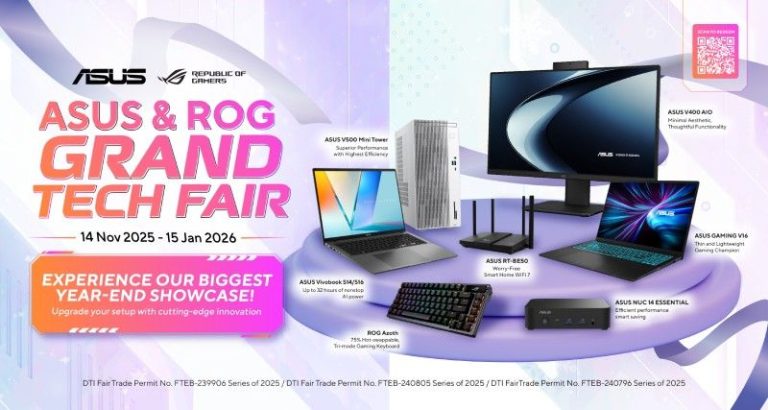
The Intersection of Blockchain and Gaming: Unpacking the Future of Game Finance
The world of gaming has undergone significant transformations over the years, evolving from simple pixelated screens to immersive virtual realities. As technology continues to advance, the gaming industry is poised to embrace another revolutionary change: blockchain. The integration of blockchain technology into gaming is not just a fleeting trend but a powerful shift that could redefine the entire landscape of game finance. In this article, we explore the intersection of blockchain and gaming, delving into how this synergy is reshaping game finance, offering new opportunities, and addressing longstanding challenges.
Understanding Blockchain Technology
Before diving into its application in gaming, it’s crucial to understand the fundamentals of blockchain technology. At its core, blockchain is a decentralized digital ledger that records transactions across multiple computers in a way that ensures security and transparency. This technology underpins cryptocurrencies like Bitcoin and Ethereum, enabling peer-to-peer transactions without intermediaries. The decentralized nature of blockchain makes it tamper-proof and highly secure, qualities that are incredibly appealing to the gaming industry.
Blockchain’s Role in Game Finance

Blockchain has the potential to revolutionize game finance by introducing several key elements:
- Decentralized Transactions: Blockchain allows for decentralized transactions, eliminating the need for intermediaries and reducing transaction fees. This benefits both gamers and developers by enabling faster and more cost-effective exchanges.
- Ownership and Scarcity: Through blockchain, digital assets such as in-game items can be tokenized, ensuring true ownership and scarcity. Players can buy, sell, and trade these assets on secondary markets, creating real-world value.
- Transparency and Security: Blockchain’s transparency ensures that all transactions are recorded and verifiable, reducing the risk of fraud. The security of blockchain protects against hacking and unauthorized access.
Play-to-Earn Models
One of the most exciting developments at the intersection of blockchain and gaming is the rise of play-to-earn models. These models allow players to earn cryptocurrency or other blockchain-based assets by playing games. This approach not only provides entertainment but also offers financial incentives, attracting a broader audience to gaming.
For instance, games like Axie Infinity have popularized play-to-earn by enabling players to breed, battle, and trade digital creatures called Axies. Players can earn cryptocurrency by participating in battles and selling their Axies on the marketplace. This model has proven to be a significant source of income for players in various regions, especially during economic downturns.
Tokenization of In-Game Assets
In traditional gaming, players invest time and money into acquiring in-game assets, but these assets often remain locked within the game ecosystem. Blockchain changes this dynamic by allowing for the tokenization of in-game assets. Tokenization converts digital items into unique tokens on the blockchain, granting players true ownership and the ability to trade assets across different games and platforms.
For example, Enjin is a blockchain platform that facilitates the creation and management of blockchain-based gaming assets. Developers can create fungible and non-fungible tokens (NFTs) that represent in-game items, thus giving players more control and the opportunity to monetize their investments.

Challenges and Considerations
While the integration of blockchain into gaming offers numerous benefits, it also presents challenges that need to be addressed:
- Scalability: Blockchain networks can face scalability issues, especially when handling a high volume of transactions. This can lead to delays and increased transaction costs, which can hinder the gaming experience.
- Regulatory Concerns: The regulatory landscape for blockchain and cryptocurrencies is still evolving, and gaming companies must navigate complex legal frameworks to ensure compliance.
- Environmental Impact: Some blockchain networks, like Bitcoin, have been criticized for their high energy consumption. Developers need to explore more sustainable blockchain solutions to mitigate environmental impact.
The Future of Blockchain in Gaming
The future of blockchain in gaming is promising, with numerous innovations on the horizon. As blockchain technology matures, we can expect more seamless integration into gaming ecosystems. Here are some potential developments:
- Interoperability: Blockchain can enable interoperability between different games, allowing players to use their digital assets across various platforms. This could lead to a more unified gaming experience.
- Decentralized Game Development: Blockchain can facilitate decentralized game development, where developers and players collaborate to create and improve games. This can lead to more diverse and community-driven gaming experiences.
- Enhanced Player Engagement: Blockchain-based incentives, such as earning cryptocurrency for achievements, can enhance player engagement and retention.

To learn more about the future developments in blockchain technology, visit the IBM Blockchain page for insights and resources.
Takeaways
The intersection of blockchain and gaming marks a transformative moment in the evolution of game finance. By leveraging blockchain technology, the gaming industry can unlock new opportunities for players, developers, and investors alike. While challenges exist, the potential benefits—ranging from decentralized transactions and true ownership of assets to play-to-earn models—are too significant to ignore. As the technology continues to evolve, it will be fascinating to see how blockchain reshapes the gaming landscape and creates new possibilities for the future of game finance.
For more information on how blockchain is impacting various industries, explore resources from CoinDesk for the latest news and analysis.
Real-World Examples of Blockchain in Gaming
Several pioneering projects and games have already begun to demonstrate the potential of blockchain technology within the gaming sector. These examples highlight the diverse applications and benefits of blockchain integration:
1. Decentraland: Decentraland is a virtual reality platform powered by the Ethereum blockchain. Users can create, experience, and monetize content and applications within a 3D virtual world. Land ownership in Decentraland is represented by NFTs, allowing users to buy, sell, and develop plots of land. This setup enables players to generate income through virtual real estate, events, and services.

2. CryptoKitties: One of the earliest blockchain-based games, CryptoKitties allows players to breed and trade unique digital cats, each represented as an NFT. The game’s viral success showcased the potential for blockchain-based collectibles and demonstrated how digital scarcity can drive demand and value in gaming.
3. Sorare: Sorare is a fantasy football game that uses blockchain to create digital trading cards of real-life football players. These cards are NFTs, and players can buy, sell, and trade them to build their fantasy teams. Sorare combines the excitement of fantasy sports with the benefits of blockchain-based ownership and scarcity.
Emerging Trends and Innovations
The integration of blockchain technology into gaming is still in its early stages, but several emerging trends and innovations are worth noting:
- Cross-Game Economies: Blockchain can facilitate the development of cross-game economies, where players can use digital assets across multiple games. This concept is gaining traction as developers recognize the potential for creating shared virtual economies that enhance player engagement and retention.
- Decentralized Autonomous Organizations (DAOs): DAOs are community-driven organizations that operate through blockchain-based smart contracts. In gaming, DAOs can empower players to have a say in game development decisions, fostering a more democratic and inclusive gaming environment.
- Layer 2 Solutions: To address scalability and transaction cost issues, developers are exploring layer 2 solutions, such as sidechains and state channels, which operate on top of existing blockchains. These solutions aim to enhance the speed and efficiency of blockchain transactions, making them more suitable for gaming applications.

Educational Resources and Communities
As blockchain technology becomes more prevalent in gaming, educational resources and communities are emerging to support developers, gamers, and enthusiasts. These resources provide valuable insights into blockchain integration and the latest industry developments:
- Online Courses: Platforms like Coursera offer courses on blockchain technology, cryptocurrencies, and their applications in gaming. These courses cater to a diverse audience, from beginners to seasoned professionals.
- Developer Communities: Developer forums and communities, such as GitHub and Reddit’s blockchain gaming subreddits, provide a collaborative environment for sharing knowledge, discussing challenges, and exploring new ideas.
- Industry Conferences: Events like the Blockchain Game Summit and NFT.NYC bring together industry leaders, developers, and enthusiasts to discuss the latest trends and innovations in blockchain gaming.
The Road Ahead
As blockchain technology continues to evolve, its impact on the gaming industry will undoubtedly grow. Developers will continue to experiment with new models and applications, pushing the boundaries of what’s possible in game finance. Gamers can look forward to more immersive and rewarding experiences, where their time and effort translate into tangible value.
While challenges remain, the potential for blockchain to redefine the gaming landscape is immense. By fostering innovation, transparency, and player empowerment, blockchain is set to become a cornerstone of the future of gaming. As we look ahead, it’s clear that the intersection of blockchain and gaming will continue to be a dynamic and exciting space to watch.




